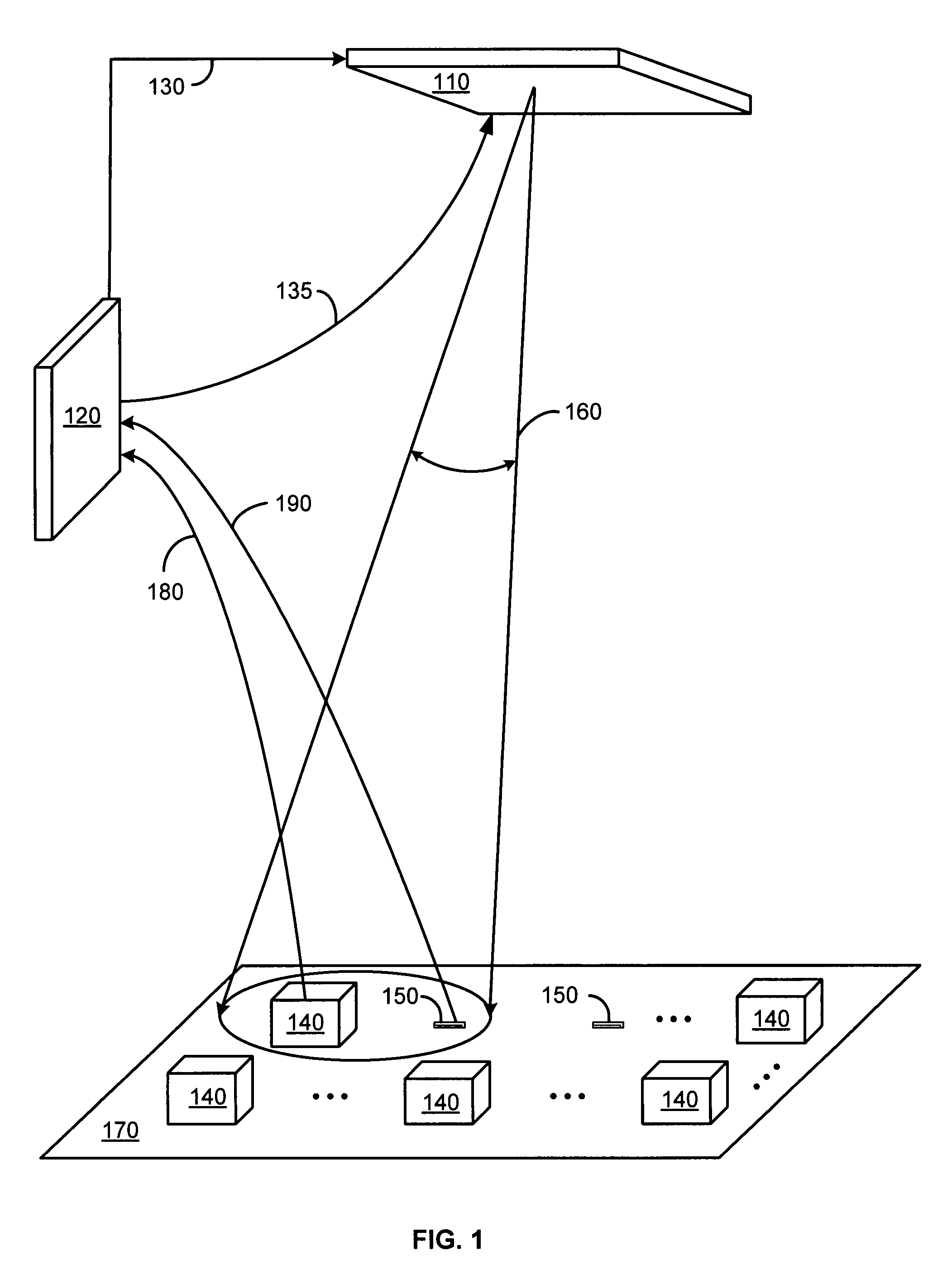Systems and methods of beamforming in radio frequency identification applications
a beamforming and radio frequency identification technology, applied in the field of systems and methods of beamforming in radio frequency identification applications, can solve the problems of limited maximum read range of rfid readers, time-consuming manual configuration and/or tuning, and bulky coaxial cables. achieve the effect of facilitating deployment of rfid applications and enhancing read range and reliability
- Summary
- Abstract
- Description
- Claims
- Application Information
AI Technical Summary
Benefits of technology
Problems solved by technology
Method used
Image
Examples
Embodiment Construction
[0026]The present invention includes systems and methods for beamforming in radio frequency identification applications. A distributed architecture uses techniques for antenna beamforming and a feedback control loop to direct radio frequency (RF) energy onto a specific region including a calibration node, referred to as an interrogation zone, where one or more RFID tags may be located.
[0027]The distributed architecture of the beamforming system is resistant to fading and shadowing effects, providing accurate RFID reader operation even in environments with multi-path reflections or environmental changes, such as people moving around, changes in the location of equipment, etc. By connecting the beamforming nodes to the RFID reader node using a wireless coupling, the need for coaxial cable is eliminated. The distributed architecture also enables the use of low-cost, low-data rate wires for communication between the reader node and the beamforming nodes. Furthermore, the architecture of...
PUM
 Login to View More
Login to View More Abstract
Description
Claims
Application Information
 Login to View More
Login to View More - R&D
- Intellectual Property
- Life Sciences
- Materials
- Tech Scout
- Unparalleled Data Quality
- Higher Quality Content
- 60% Fewer Hallucinations
Browse by: Latest US Patents, China's latest patents, Technical Efficacy Thesaurus, Application Domain, Technology Topic, Popular Technical Reports.
© 2025 PatSnap. All rights reserved.Legal|Privacy policy|Modern Slavery Act Transparency Statement|Sitemap|About US| Contact US: help@patsnap.com



